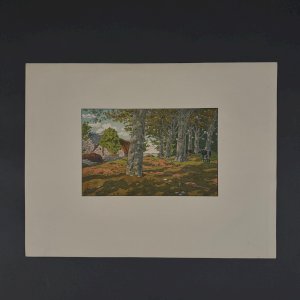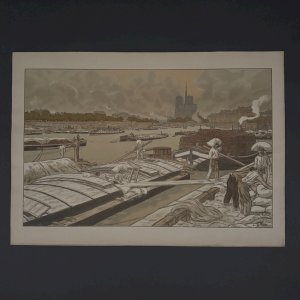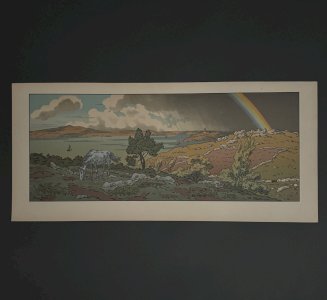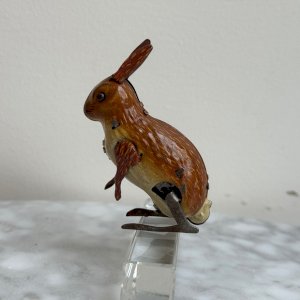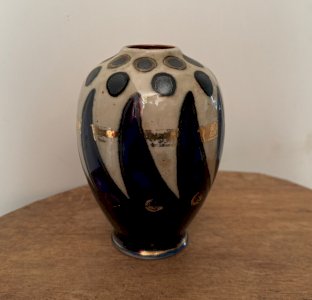- Sell Now
- Home
-
FURNISH
All STORAGE FURNITURE • Wardrobe • Chests of drawers, Chiffonnier • Sideboard • Shelves, Bookshelves • File cabinet • Sewing Furniture • Bar cabinet • TV Stand • Trunk, Chest TABLE & BEDSIDE TABLE • Dinner Table • Coffee table, side table, end table & Bedside • Console, Pedestal table & Selette • Serving Table, Trolley • Card Table • Draper's counter & table SEAT • Sofa • Armchair • Chair • Stool • Bench • Daybed • Beanbag & Footrest • Deckchair & Outdoor DESK, SECRETARY, DRESSING TABLE GARDEN LOUNGE BEDDING • Bed • Bedhead • Cradle, Moses basket CRAFT FURNITURE, WORKSHOP • Workbench • Stool, Ladder, Step • Easel & Trestle SCREEN PIANO
-
DECORATE
All TO PUT • Sculpture, Statuette • Vase & Planter • Dame Jeanne, Bonbonne & Flacon • Bridal globe, Dome • Pin tray, Ashtray • Candlestick & Candle • Photo frame • Stone, Fossil, Mineral • Earth Globe MIRROR WALL DECORATION • Painting • Engraving & Illustration • Poster • Tapestry • Wall Frame • Plate & Sign • Juju Hat & Wall Paniel • Mask • Hunting Trophy • Other object to hang CLOCK, PENDULUM & ALARM CLOCK ARRANGEMENT • Jar, Box & Case • Basket, Wastebasket & Crates • Magazine Rack & Vinyl Holder • Display & Spinner • Coat hook & Coat rack • Furniture Valet & Mannequin • Towel Holder • Suitcase & Travel Bag • Bottle Rack • Umbrella holder BATHROOM OFFICE • Mail holder • Bookends • Sulphide & Paperweight • Stationery FIREPLACE ACCESSORIES HOBBIES • Vintage Sport • Music • Vintage device • Smoking Item • Militaria, Ancient weapon • Miniature Vehicle • Game, Playing Cards • Collection object & Curiosity BIRD CAGE RELIGION, SPIRITUALITY
- TEXTURE
- ILLUMINATE
-
ACCOMODATE
All TABLE & SERVING • Plate • Silverware • Knife Holder • Glass • Bowl, Mug, Cup • Bowl, Ramekin & Cup • Dish, Cup & Salad Bowl • Tray, Basket & Server • Table Mat • Pitcher, Carafe, Bottle, Tea & Coffee Jug • Ice Bucket • Salt & Pepper shakers, Oil & Vinegar shakers • Sugar and jam maker • Gravy boat • Butter dish • Egg cup • Terrine OLD BALANCE CUTTING BOARD GRINDER CASSEROLE, SAUCEPAN & PAN KITCHEN UTENSIL & ACCESSORY
- TINKER
- KIDS
- Jewelry & Accessories
Login
Related Products
Description
Lithograph Henri Rivière Snow A5145 It is signed: Henri Rivière, and monogrammed with a red stamp in the plate. Note a line of ink on the right in the margin, small stains and a slight yellowing in the margin. The lithograph is in good condition, the colors have remained fresh. We have taken as many photos of the defects as possible so that you can judge the condition. Sold as presented. Henri Rivière (1864-1951) is a French painter, engraver and illustrator. He began his career with drawing (strongly inspired by the works of Gustave Doré) then with intaglio engraving and specifically etching in 1882. At the same time he began a career as a director and scenographer, in 1886, of the shadow theater at the Chat Noir cabaret, shows which he improves by creating very innovative colored sets. He was artistic director until the Chat Noir closed in 1897. He then devoted himself exclusively to painting and engraving and established himself in the history of etching, prints, wood engraving, lithography and watercolor. Henri Rivière was born in 1864 in Paris. Through his mother Henriette, he is the nephew of Alphonse-Henri-François Leroux (1831-1895), chicory industrialist in Orchies. His father is a haberdasher and originally from Ax-les-Thermes. The young Rivière was trained in pictorial art in 1880 by the history painter Émile Bin, then delivered illustrations to various newspapers[Which ones?]. In 1882, meeting Rodolphe Salis, he was appointed editorial secretary of the weekly magazine Le Chat noir. In 1886 he became responsible for the Chat noir theater project, which opened its doors at no. 12 rue Victor-Massé in December 1887. Renewing shadow theater, he created the decor for the show La Tentation de Saint-Antoine, on a text by Édouard Norès based on the poem by Gustave Flaubert, painted on colored glass plates in the background, while the characters, cut out on a sheet of zinc, appear in the foreground like a shadow projected by a lamp placed under the stage, a little forward, sending its rays sideways. He designed the staging and all the sets until the theater closed in 1897. In addition to La Tentation, he created La Marche à l'étoile, mystery in 10 paintings (1893), to the poems and music of Georges Fragerolle , as well as The Prodigal Son, and a Sainte-Geneviève with the same. Furthermore, from 1885 to 1895, he stayed every summer in Saint-Briac-sur-Mer, while traveling to other places in Brittany, always fascinated by the sea. In 1888, Auguste Lepère created with Félix Bracquemond, Daniel Virginie and Tony Beltrand, the magazine L'Estampe Originale, in order to interest artists and enthusiasts in new processes and trends in engraving, particularly in color. In this period where Japonism had a great influence on the decorative arts, Henri Rivière produced from this date, from 1888 to 1902, The Thirty-six Views of the Eiffel Tower. In 1891, Valloton also renewed wood engraving, with Gauguin or Émile Bernard and Toulouse-Lautrec in turn revolutionized the art of the poster, by drawing the one intended for the famous cabaret opened in 1889, entitled Moulin-Rouge - La Goulue , followed by that produced in 1894 by Alfons Mucha for Sarah Bernhardt in the role of Gismonda. He married Eugénie Ley in 1895 and lived at no. 29 boulevard de Clichy in Paris. The couple built a house in Loguivy-de-la-Mer (Ploubazlanec, at the mouth of the Trieux), and this is where the summers were spent from then on until 1913. In 1912, on the death of his brother Jules, he takes care of his nephew Georges-Henri Rivière, future museologist. In 1917, Henri Rivière stopped expressing himself through prints, and he used watercolors, already practiced a little since 1890 (he painted around a thousand watercolors). He traveled a lot, spent the Second World War in Buis-les-Baronnies where his wife died in 1943, became blind in 1944, and dictated his memoirs, published in 2004 under the title Les Détours du chemin. Our numerous photos allow you to appreciate the quality of the object. For the condition, please detail the photos. Feel free to zoom in. The photos are an integral part of the description. Dimensions: Height: 30.8 cm Width: 67.5 cm View Height: 23.9 cm Width: 59.9 cm I remain at your disposal for any questions.
Réf :
#230672
Comments
Related Products
Description
Lithograph Henri Rivière Snow A5145 It is signed: Henri Rivière, and monogrammed with a red stamp in the plate. Note a line of ink on the right in the margin, small stains and a slight yellowing in the margin. The lithograph is in good condition, the colors have remained fresh. We have taken as many photos of the defects as possible so that you can judge the condition. Sold as presented. Henri Rivière (1864-1951) is a French painter, engraver and illustrator. He began his career with drawing (strongly inspired by the works of Gustave Doré) then with intaglio engraving and specifically etching in 1882. At the same time he began a career as a director and scenographer, in 1886, of the shadow theater at the Chat Noir cabaret, shows which he improves by creating very innovative colored sets. He was artistic director until the Chat Noir closed in 1897. He then devoted himself exclusively to painting and engraving and established himself in the history of etching, prints, wood engraving, lithography and watercolor. Henri Rivière was born in 1864 in Paris. Through his mother Henriette, he is the nephew of Alphonse-Henri-François Leroux (1831-1895), chicory industrialist in Orchies. His father is a haberdasher and originally from Ax-les-Thermes. The young Rivière was trained in pictorial art in 1880 by the history painter Émile Bin, then delivered illustrations to various newspapers[Which ones?]. In 1882, meeting Rodolphe Salis, he was appointed editorial secretary of the weekly magazine Le Chat noir. In 1886 he became responsible for the Chat noir theater project, which opened its doors at no. 12 rue Victor-Massé in December 1887. Renewing shadow theater, he created the decor for the show La Tentation de Saint-Antoine, on a text by Édouard Norès based on the poem by Gustave Flaubert, painted on colored glass plates in the background, while the characters, cut out on a sheet of zinc, appear in the foreground like a shadow projected by a lamp placed under the stage, a little forward, sending its rays sideways. He designed the staging and all the sets until the theater closed in 1897. In addition to La Tentation, he created La Marche à l'étoile, mystery in 10 paintings (1893), to the poems and music of Georges Fragerolle , as well as The Prodigal Son, and a Sainte-Geneviève with the same. Furthermore, from 1885 to 1895, he stayed every summer in Saint-Briac-sur-Mer, while traveling to other places in Brittany, always fascinated by the sea. In 1888, Auguste Lepère created with Félix Bracquemond, Daniel Virginie and Tony Beltrand, the magazine L'Estampe Originale, in order to interest artists and enthusiasts in new processes and trends in engraving, particularly in color. In this period where Japonism had a great influence on the decorative arts, Henri Rivière produced from this date, from 1888 to 1902, The Thirty-six Views of the Eiffel Tower. In 1891, Valloton also renewed wood engraving, with Gauguin or Émile Bernard and Toulouse-Lautrec in turn revolutionized the art of the poster, by drawing the one intended for the famous cabaret opened in 1889, entitled Moulin-Rouge - La Goulue , followed by that produced in 1894 by Alfons Mucha for Sarah Bernhardt in the role of Gismonda. He married Eugénie Ley in 1895 and lived at no. 29 boulevard de Clichy in Paris. The couple built a house in Loguivy-de-la-Mer (Ploubazlanec, at the mouth of the Trieux), and this is where the summers were spent from then on until 1913. In 1912, on the death of his brother Jules, he takes care of his nephew Georges-Henri Rivière, future museologist. In 1917, Henri Rivière stopped expressing himself through prints, and he used watercolors, already practiced a little since 1890 (he painted around a thousand watercolors). He traveled a lot, spent the Second World War in Buis-les-Baronnies where his wife died in 1943, became blind in 1944, and dictated his memoirs, published in 2004 under the title Les Détours du chemin. Our numerous photos allow you to appreciate the quality of the object. For the condition, please detail the photos. Feel free to zoom in. The photos are an integral part of the description. Dimensions: Height: 30.8 cm Width: 67.5 cm View Height: 23.9 cm Width: 59.9 cm I remain at your disposal for any questions.
Réf :
#230672
 English
English  Français
Français 






